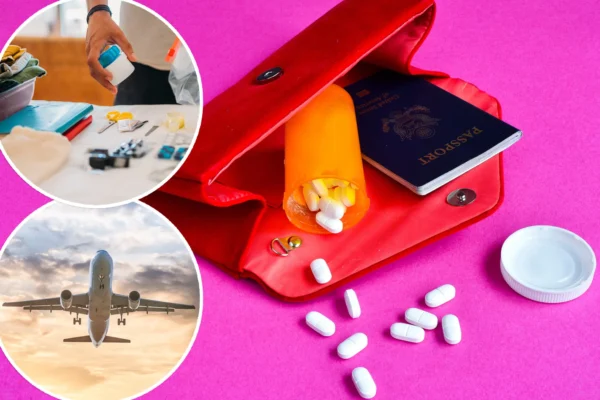
Expert Shares the Dos and Don’ts for Keeping Medication Safe When Travelling This Summer

Summer travel season is in full swing, with an estimated 35 million Brits (53 percent) set to journey abroad this year.
However, ensuring your medication remains safe can be tricky, particularly when flying. So, it’s important to understand how to store it properly for a smooth trip.
To help you keep your medications effective and secure, here are my top tips for travellers this summer.
DO keep your medication in your hand luggage
It might be tempting to put your medication in your checked bags, especially if you’re travelling for long periods and have a larger supply. However, doing so will expose your pharmaceuticals to extreme temperatures in the cargo hold.
This may mean that temperature-sensitive medications, such as insulin, antibiotics and even birth control, won’t work as well if they’re degraded from fluctuating temperatures.
Keeping your medications in your carry-on bag and in their original packaging not only ensures you have more control over their environment but also means you still have access to them if your checked luggage is lost or delayed.
DON’T keep your medication in a folder
While this viral TikTok hack of keeping medication in a clear binder might seem like a handy idea for keeping your medication organised, it’s not one I’d recommend when travelling.
Pill packets are specially designed to protect medications from UV light, so exposing your pills to light in a plastic see-through folder could leave them vulnerable to degradation.
Additionally, removing pills from their original packaging can create issues when travelling. Some countries may not accept the medication being transported outside of their original containers, even if you have these with you in the folder.
It’s always best to keep medications in their original containers, with labels intact, to avoid legal complications and to ensure they stay protected from light and heat.
DO check your fluid allowance
Although the 100ml liquid rule for flying was set to be scrapped earlier this year, the Department of Transport has since u-turned on this rule change to allow more time for UK airports to adopt new 3D scanners.
While you are allowed to bring liquid medications over 100ml in your hand luggage, you will need to provide a doctor’s note or equivalent as proof of the medication being prescribed to you. You won’t be required to provide this for medications under this 100ml limit.
These rules may differ depending on the country you’re visiting, so it’s always best to double check that country’s legislation before you fly.
DON’T forget to check if your medication can withstand an X-ray
While most medications will be perfectly fine going through an X-ray machine, some studies have indicated that biologics – a medication made from living organisms to target specific parts of the immune system – may be sensitive to airport security screenings.
These drugs are highly volatile to changes in temperature and radiation exposure, which can compromise their effectiveness.
If you’re unsure, consult your doctor or pharmacist to determine if your medication can safely go through X-ray machines. You may be able to request a manual inspection at the security checkpoint to avoid potential degradation.
DO watch out for air pressure changes
Air pressure changes during flights can affect some medications, particularly those in liquid form or using a pre-filled delivery system, such as an insulin shot.
Studies have shown that fluctuating air pressure can cause unintended delivery in insulin pumps due to the formation of air bubbles.
If you’re concerned about specific medications, talk to your pharmacist about how to protect them from pressure changes during your flight.
By Steve Brownett-Gale, Marketing Lead, Origin














































